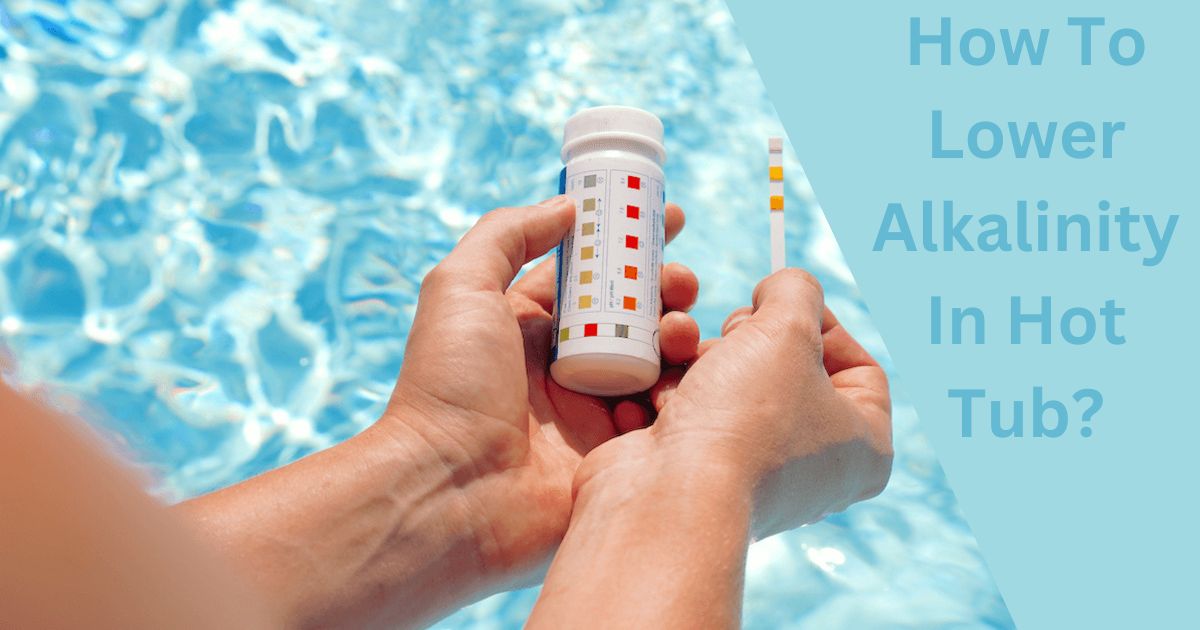Maintaining proper alkalinity levels is crucial for a healthy and comfortable hot tub experience. When alkalinity levels are too high, it can lead to various issues such as cloudy water, pH imbalances, and potential skin irritations. Lowering alkalinity is essential to restore the water’s balance, ensuring it remains safe and enjoyable.
Understanding the factors affecting alkalinity, such as chemicals, environmental elements, and frequent use, is fundamental. This guide delves into practical methods to effectively reduce alkalinity levels in hot tubs. From testing and analyzing alkaline levels to employing specific techniques like pH reducers, dilution, or aeration, a comprehensive approach is necessary to achieve optimal water chemistry.
By following these steps and maintaining a consistent monitoring routine, hot tub owners can efficiently manage alkalinity levels, promoting clearer, safer, and more comfortable water for a delightful soaking experience.
Understanding Alkalinity in Hot Tubs
Alkalinity in hot tubs refers to the water’s capacity to resist changes in pH levels. It acts as a buffer, stabilizing the water against sudden fluctuations in acidity or basicity. Measured in parts per million (ppm), maintaining proper alkalinity (typically between 80-120 ppm) is crucial for balanced water chemistry.
High alkalinity can lead to cloudy water, scale buildup, and hinder the effectiveness of sanitizers. Conversely, low alkalinity can cause pH levels to swing, leading to skin irritation and equipment corrosion. Factors like chemicals, water source, and debris can impact alkalinity. Regular testing and adjustment are vital for a comfortable and safe hot tub experience.
Understanding alkalinity allows for effective management, ensuring the water remains clear, the equipment stays in good condition, and users enjoy a refreshing and hygienic soak.
Importance of Balanced Alkalinity
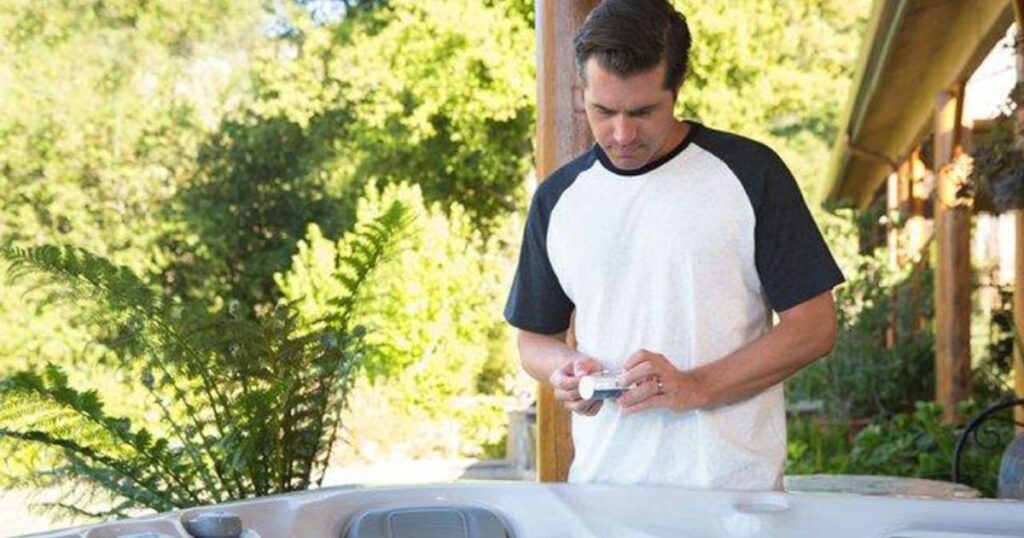
Balanced alkalinity is vital for maintaining a healthy and enjoyable hot tub environment. It acts as a crucial component in stabilizing pH levels, preventing rapid fluctuations that could otherwise lead to discomfort and potential issues. An optimal alkalinity level, typically between 80-120 ppm, ensures the water remains chemically stable. This stability not only promotes clearer and more inviting water but also enhances the effectiveness of other water treatment chemicals like sanitizers.
Moreover, balanced alkalinity helps prevent corrosion or damage to the hot tub equipment caused by extreme pH shifts. It also plays a role in safeguarding users’ skin and eyes, as overly high or low alkalinity levels can lead to irritation.
By understanding the significance of balanced alkalinity, hot tub owners can maintain a more pleasant and safe environment for soaking, ensuring the water remains clear, the equipment lasts longer, and the overall experience is enjoyable for all users.
Testing Alkalinity Levels
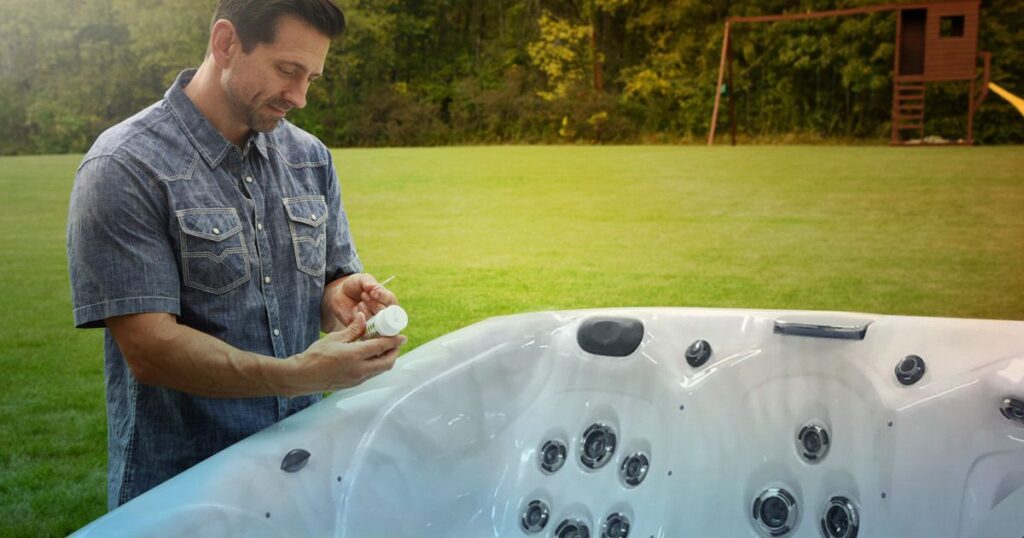
Testing alkalinity levels in a hot tub is a fundamental step in maintaining water quality. Several test kits are available, allowing users to measure alkalinity levels accurately. The process typically involves collecting a water sample and adding specific reagents to assess the alkalinity level, usually measured in parts per million (ppm).
To perform the test, follow the instructions provided with the test kit. Usually, a few drops of the testing solution are added to the water sample, causing a color change. By comparing this color change to a color chart included in the kit, one can determine the alkalinity level.
Regular testing, preferably weekly or bi-weekly, helps monitor changes in alkalinity, enabling prompt adjustments if levels deviate from the desired range. Understanding how to accurately test and interpret alkalinity levels empowers hot tub owners to maintain a balanced water chemistry, ensuring a more comfortable and enjoyable soaking experience while preserving the longevity of the tub and its equipment.
Steps to Lower Alkalinity Safely
Lowering alkalinity in a hot tub can be done through several safe and effective steps:
Test Alkalinity
Testing alkalinity in a hot tub involves using specialized kits to measure the water’s alkaline levels in parts per million (ppm). Typically, a water sample undergoes a chemical reaction with testing reagents, resulting in a color change. Comparing this color to a provided chart allows for accurate determination of alkalinity levels. Regular testing, usually weekly or bi-weekly, aids in monitoring and maintaining balanced water chemistry for a comfortable and safe soaking experience.
Drain and Dilute
Drain and dilute is a method used to reduce alkalinity in a hot tub by partially draining the water and refilling it with fresh water. This process helps dilute the concentration of minerals and compounds, effectively lowering alkalinity levels. While it’s a straightforward approach, it might not be sufficient for significant reductions in alkalinity and may need to be combined with other methods for more precise adjustments.
pH Reducers
pH reducers are chemical agents used to lower the pH level in hot tubs. They typically contain acids like sodium bisulfate or muriatic acid. When added to water, these substances effectively decrease pH, aiding in balancing alkalinity. Careful measurement and gradual addition of pH reducers are essential to avoid overcorrection. Regular testing and precise dosing ensure safe and comfortable pH levels in hot tubs for an optimal soaking experience.
Aeration Technique
The aeration technique involves increasing oxygen exposure in the hot tub water by using jets or air blowers. This process promotes the release of carbon dioxide gas, which, when expelled, can contribute to lowering alkalinity levels. By enhancing the water’s exposure to air, the aeration technique aids in balancing the pH and alkalinity, creating a more comfortable and stable environment for a refreshing hot tub experience.
Regular Testing and Adjustment
Regular testing and adjustment of alkalinity in your hot tub is essential for maintaining water balance. Testing the water frequently, ideally weekly or bi-weekly, ensures timely detection of any alkalinity changes. By promptly adjusting alkalinity levels using appropriate chemicals or dilution methods, you can prevent imbalances that could lead to cloudy water, equipment damage, or discomfort. Consistent monitoring safeguards a more enjoyable and safe hot tub experience.
Always follow manufacturer guidelines for the safe use of chemicals and products in your hot tub. Additionally, patience is key as adjustments might take time to reflect accurately in water tests. Consulting with a professional or a local pool and spa expert can offer valuable guidance for specific circumstances.
Using pH Reducers
pH reducers are vital tools for managing alkalinity in hot tubs. These specially formulated chemicals assist in lowering both pH and alkalinity levels, promoting balanced water chemistry. Common pH reducers, like sodium bisulfate or muriatic acid, work by neutralizing excess alkalinity, stabilizing pH levels within the desired range of around 7.2 to 7.6.
Careful handling and precise dosing are crucial when using pH reducers. Follow manufacturer guidelines meticulously, measuring the correct amount based on your hot tub’s size and the current alkalinity level. Add the reducer gradually to avoid sudden fluctuations in water chemistry.
Regularly test the water after using pH reducers to monitor the adjustments made and ensure the desired alkalinity range, typically between 80-120 ppm, is achieved. Understanding how to safely and effectively utilize pH reducers empowers hot tub owners to maintain a comfortable, safe, and enjoyable soaking environment while preserving the tub’s longevity and equipment efficiency.
Dilution Method for Alkalinity Reduction
The dilution method offers a straightforward approach to lower alkalinity in a hot tub. Partially draining the hot tub and refilling it with fresh water dilutes the existing water, effectively reducing the concentration of minerals responsible for high alkalinity levels. However, this method might not result in significant reductions and might only be suitable for minor adjustments.
Ensure to refill with clean, balanced water and retest the alkalinity after the dilution process. While this method helps mitigate alkalinity, it might also affect other water parameters like pH and sanitizer levels, requiring further testing and potential adjustments. For substantial reductions in alkalinity, combining the dilution method with other techniques, like pH reducers or aeration, might be necessary for more effective and balanced water chemistry in your hot tub.
Aeration Techniques for Alkalinity Control
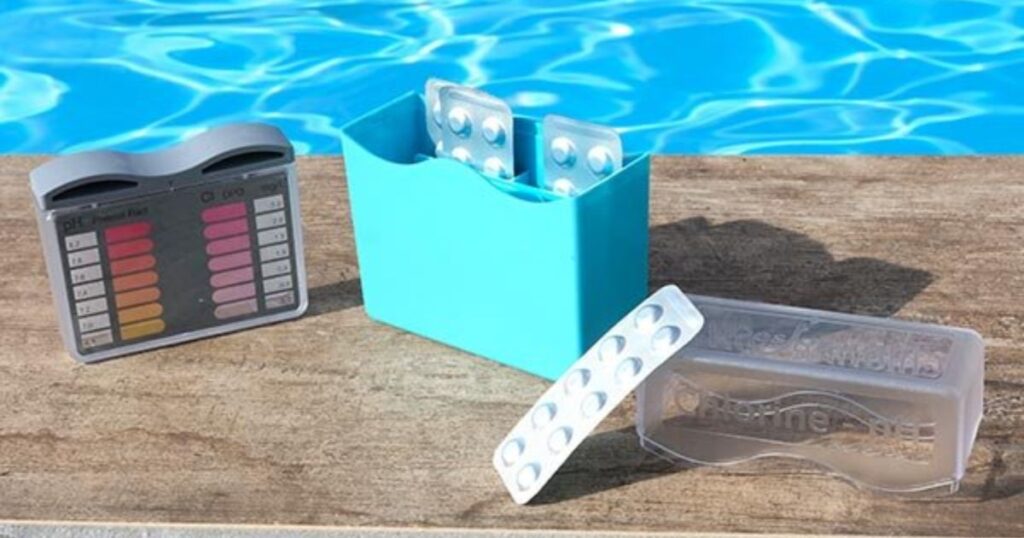
Aeration techniques play a vital role in controlling alkalinity levels in a hot tub. By increasing the exposure of water to air, aeration helps release excess carbon dioxide, which can contribute to high alkalinity. Turning on jets, adding air blowers, or using fountains and waterfalls all promote aeration.
As water interacts with air, carbon dioxide escapes, naturally lowering alkalinity levels. However, this method might take time to produce noticeable effects and might not be as effective for significant reductions in alkalinity.
Regularly testing the water during and after aeration helps monitor changes in alkalinity levels. Combining aeration techniques with other methods, such as pH reducers or partial draining and refilling, can enhance the overall effectiveness of alkalinity control in your hot tub, ensuring a more balanced and enjoyable soaking experience.
Monitoring and Maintenance Tips
Monitoring and maintaining alkalinity in your hot tub is essential for a healthy and enjoyable experience. Here are some tips to help:
Regular Testing: Test the alkalinity levels frequently, ideally weekly or bi-weekly, using reliable test kits. This allows for early detection of any changes, enabling timely adjustments.
Balance Alkalinity: Keep alkalinity levels within the recommended range, typically between 80-120 ppm, to ensure water stability and comfort.
pH Monitoring: Alkalinity and pH levels are interconnected; monitor pH alongside alkalinity to maintain a balanced environment.
Adjustment as Needed: Utilize pH reducers, aeration, or dilution methods to adjust alkalinity levels if they fall outside the desired range.
Cleanliness: Regularly clean the hot tub, including filters and surfaces, to prevent debris buildup that can affect water chemistry.
Professional Advice: Consult with experts or professionals for guidance, especially when facing persistent issues or when uncertain about adjustments.
By following these tips and maintaining a consistent monitoring routine, you can ensure balanced alkalinity levels, promoting clearer water, equipment longevity, and a more enjoyable hot tub experience for all users.
Professional Assistance for Alkalinity Adjustment
Seeking professional assistance for alkalinity adjustment in your hot tub can be immensely beneficial, especially when dealing with complex issues or persistent imbalances. Pool and spa professionals possess in-depth knowledge and experience in water chemistry, offering valuable insights into managing alkalinity effectively. They can conduct comprehensive water tests, accurately diagnose the root cause of alkalinity problems, and recommend targeted solutions tailored to your specific hot tub setup.
Additionally, professionals can guide you on the correct usage of chemicals, dosage measurements, and appropriate techniques for adjusting alkalinity while ensuring the safety and health of both users and the hot tub system. Their expertise can save time, prevent potential damage, and optimize the overall water quality, ensuring a more enjoyable and trouble-free hot tub experience. Consulting with a professional can provide peace of mind and expert guidance in maintaining optimal water chemistry in your hot tub.
Preventive Measures for Balanced Water Chemistry
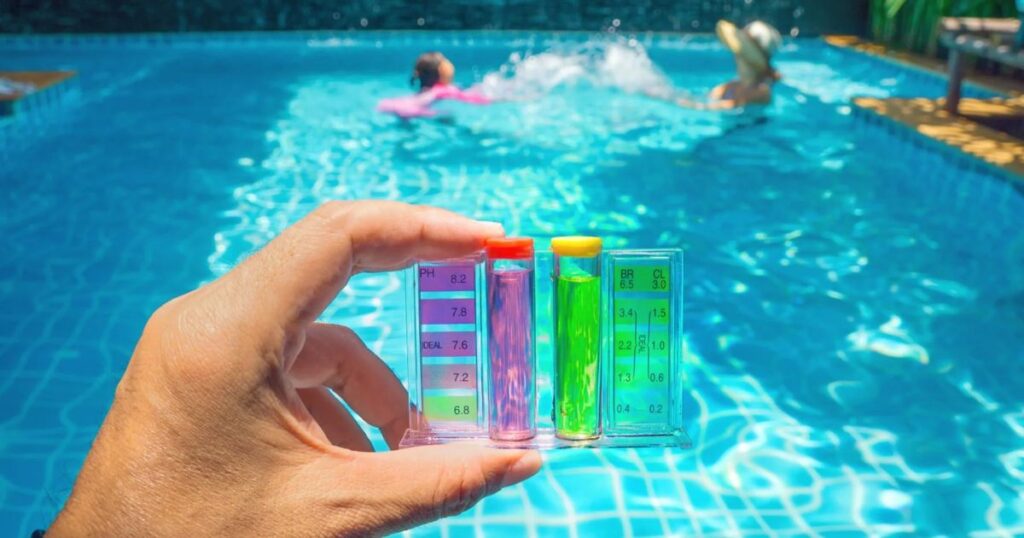
Implementing preventive measures is crucial for maintaining balanced water chemistry in your hot tub. Regular maintenance is key—clean the tub and filters routinely to prevent debris accumulation that could disrupt the water balance. Monitor and adjust sanitizer levels consistently to keep bacteria at bay without compromising the water’s chemical equilibrium.
Encourage a shower before entering the hot tub to minimize introducing contaminants. Properly store and handle chemicals, following manufacturer guidelines meticulously to avoid accidental spills or incorrect dosages that could disrupt water chemistry. Cover the hot tub when not in use to reduce exposure to environmental elements that might alter alkalinity or pH levels.
Lastly, maintain a consistent testing schedule to catch any imbalances early and address them promptly, ensuring a stable and inviting environment for soaking. These preventive measures collectively contribute to sustained balanced water chemistry, fostering a more enjoyable and trouble-free hot tub experience for everyone.
FAQ’s
How do I bring the alkalinity down in my hot tub?
To lower high alkalinity, use pH Reducer. As a rule of thumb, one capful of pH Reducer will bring your Alkalinity level down about 1 square on your test strip. pH Reducer should be added gradually to ensure you do not add to much chemical and bring the levels down too low
What if alkalinity is too high in hot tub?
Above 120mg/l ppm can cause your water to become cloudy and allow scale to grow on pool surfaces and equipment.
How do you lower alkalinity quickly?
One way to reduce alkalinity is to add acidic compounds and pH reducers. Generally, the acidic properties of these products react with the carbonated or bicarbonate alkalinity to produce carbon dioxide, expelling the carbon responsible for the high alkalinity in the form of gas.
How do you lower alkalinity without lowering pH in hot tub?
If the total alkalinity needs lowering without affecting the pH level, an acid is added, and straight after the water is aerated to raise the pH level without affecting the alkalinity.
Does chlorine lower alkalinity?
Most people know that chlorine is an important chemical in keeping pool water safe for swimming. But adding too much chlorine can lower your pool’s pH as well as its total alkalinity. When alkalinity falls, it is more difficult to maintain a stable pH.
Conclusion
Effectively managing alkalinity in a hot tub is essential for a pleasant and safe soaking experience. Understanding the significance of balanced alkalinity and employing various techniques like pH reducers, aeration, dilution, and professional guidance are key in maintaining optimal water chemistry.
Regular testing and monitoring play a pivotal role in detecting any deviations, allowing for timely adjustments and preventing potential issues such as cloudy water or equipment damage. Implementing preventive measures and consistent maintenance routines contribute significantly to sustaining balanced water chemistry.
Whether through proactive cleaning, proper chemical handling, or covering the hot tub when not in use, these practices help maintain stability in alkalinity levels. Understanding how to move a hot tub safely, along with incorporating these strategies, enables hot tub owners to ensure a harmonious balance in water chemistry. Seeking professional advice when needed further supports a refreshing and enjoyable environment for relaxation and leisure.
